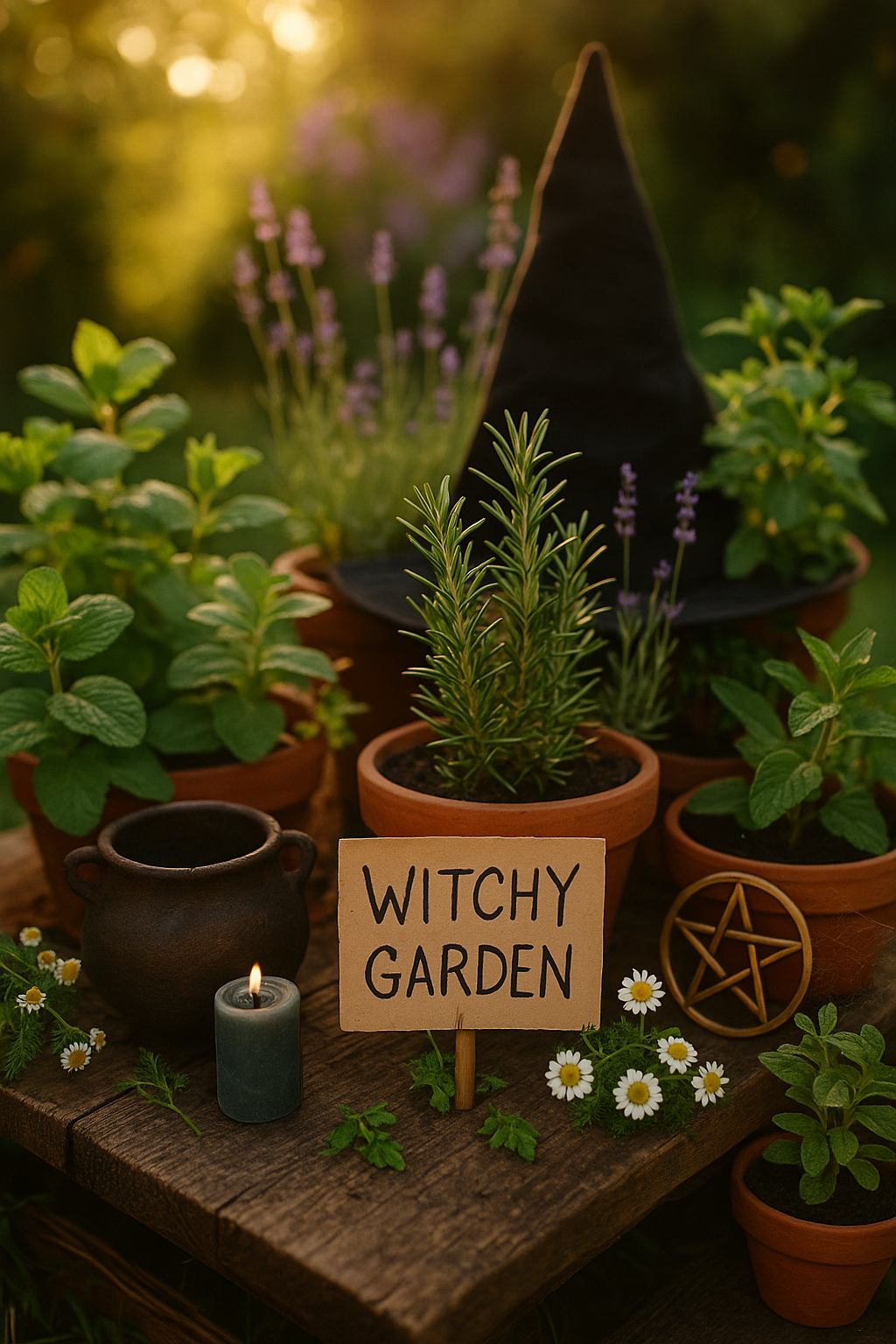There’s something deeply magical about getting your hands in the dirt, planting seeds with intention, and watching your garden bloom under the summer sun. For witches and spiritual seekers, gardening isn’t just a chore or a hobby—it’s a sacred act. A living altar. A direct connection to the Earth.
Whether you have a sprawling yard, a tiny balcony, or just a few sunny windowsills, you can grow herbs to support your craft. Here’s how to start your own witchy garden this summer.
Start With Intention
Before planting anything, pause and ask yourself: What do I want my garden to support?
- Protection?
- Healing?
- Dreamwork?
- Divination?
Let your magical goals guide your plant choices. Gardening with intention transforms a simple herb patch into a sacred space buzzing with energy.
Easy Herbs for Beginners (and Their Magical Uses)
You don’t need to grow everything—just start with a few herbs that resonate with your practice. Some beginner-friendly options include:
- Rosemary – Protection, memory, purification
- Lavender – Peace, sleep, emotional healing
- Mint – Prosperity, energy, communication
- Sage – Cleansing, wisdom, spiritual connection
- Thyme – Courage, strength, purification
- Chamomile – Sleep, calm, sun magic
- Basil – Love, abundance, protection
These herbs grow well in containers, raised beds, or tucked along the edges of your existing garden.
Enchant the Process
Gardening becomes truly magical when you make it ritual.
- Speak your intentions as you plant each seed.
- Stir moon water into your watering can.
- Add a blessing stone or charged crystal to your garden bed.
- Journal about your garden’s growth alongside your own spiritual journey.
The act of tending your plants becomes a daily meditation, a living spell that grows with time.
Invite the Spirits
Your garden is part of the larger web of nature, so invite the spirits in:
- Set up a small offering bowl under a tree or near a plant.
- Hang wind chimes or bells to call the fae and air spirits.
- Use natural materials—like wood, stone, and shells—for decorations.
- Place a statue or symbol of your deity or elemental ally in the garden to watch over it.
Harvest Mindfully
When it’s time to gather herbs, do so with gratitude. Leave an offering—water, song, or a whispered thank you. Harvest during the appropriate moon phase if possible (waxing for growth, waning for release), and always leave enough behind for the plant to thrive.
Your Garden, Your Spell
Your witchy garden is more than a source of magical ingredients—it’s a mirror of your energy, a co-creation between you and the land. With each leaf you touch and each bud that blooms, you deepen your relationship with nature and the sacred.
So take off your shoes, feel the Earth beneath you, and plant something magical this summer. 🌿




